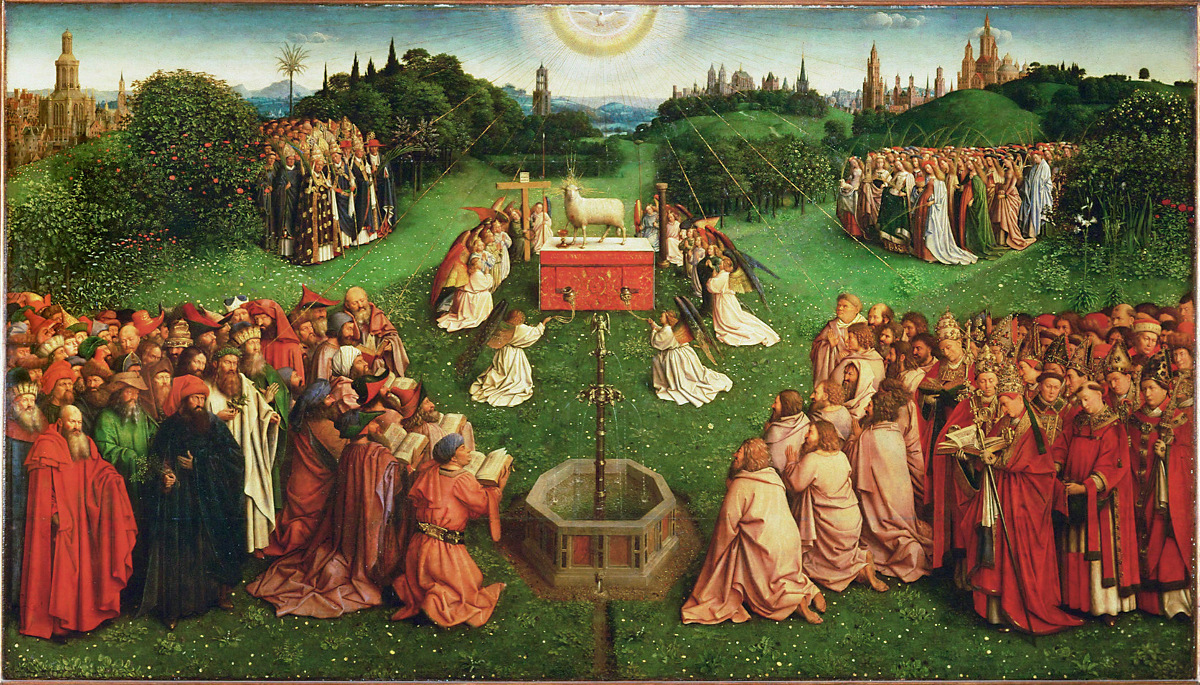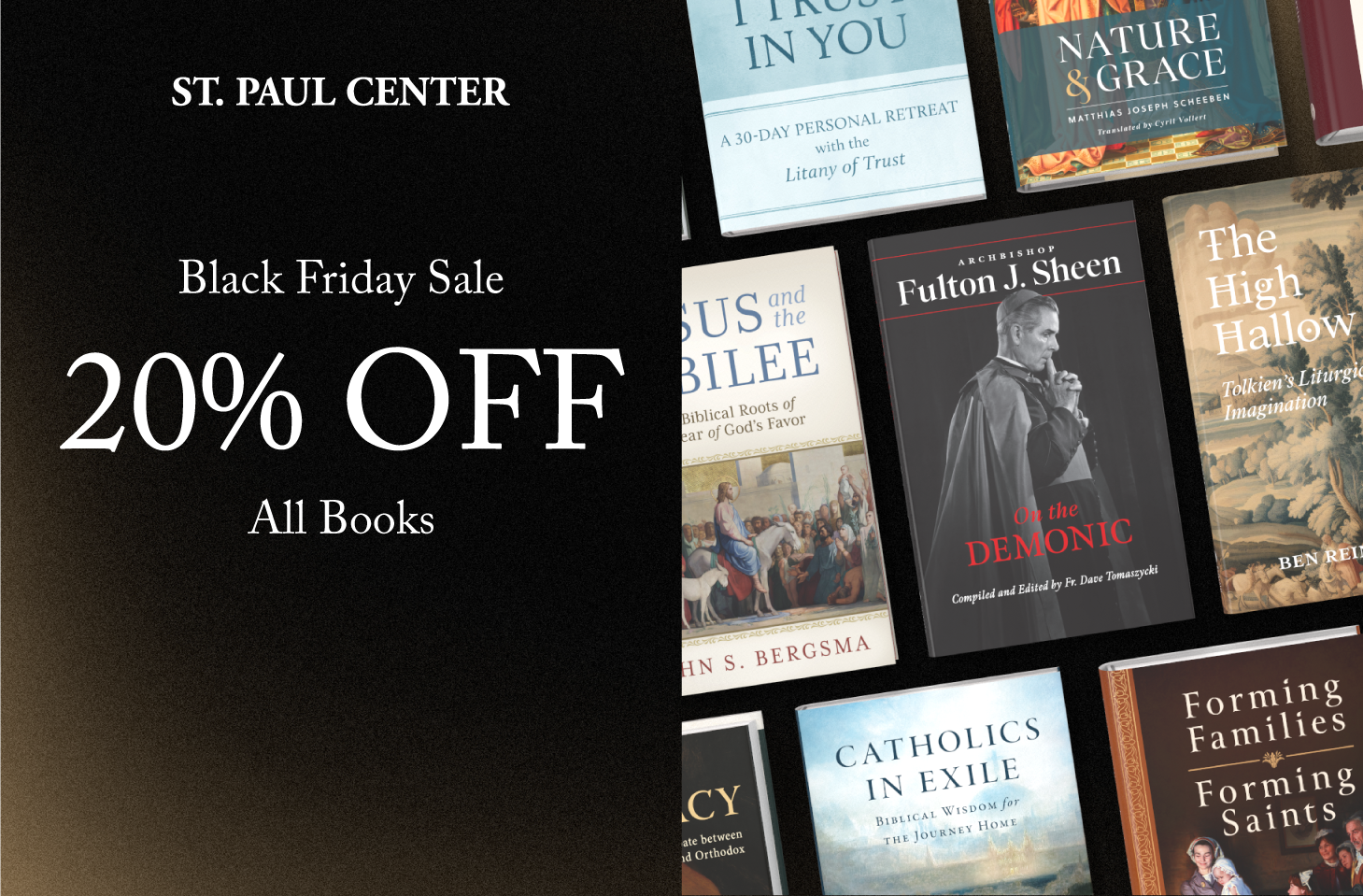The Lamb's Supper: The Bible and the Mass
Lesson Two: Given for You - The Old Testament Story of Sacrifice

Lesson Objectives
- To understand the biblical background to the Penitential Rite and the Gloria in the Mass.
- To understand how God is worshipped in the Old Testament.
- To understand the biblical notion of sacrifice as it is presented in the Old Testament.
I. Introductory Rites
A. God's Mercy and Glory
In our first lesson, we saw how the Introductory Rites of the Mass draw us into the biblical world of worship.
We saw how the Mass was given to us by Jesus in order to "actualize" - make real in our lives - the salvation and new life promised in the pages of the Bible.
Those introductory rites continue with a confession of sins and a singing of God's praises. Our penitential prayers and the singing of the Gloria are shot through with biblical language and meaning.
The phrase "Lord, have mercy" appears often in Scripture, in both the Old and New Testaments (see Sirach 36:12; Baruch 3:2; Psalm 51:1; Matthew 15:22; 17:15). The Scriptures teach again and again that mercy is among God's greatest attributes (seeExodus 34:6; Jonah 4:2).
The "Gloria" is the prayer of the angels, sung on the first Christmas night (see Luke 2:14). To that angelic prayer, the Church has added echoes of the angelic songs the Apostle John heard in the heavenly liturgy (see Revelation 15:3-4; 4:11; 5:11-14).
Again in the Mass we find ourselves praying and singing with the very words of Scripture. But there is an even deeper biblical dimension to this moment in the Mass.
The confession of sin, accompanied by the offering of sacrifices, was a staple of the Israelites' worship (see Leviticus 5:5-6). So was the giving of praise and glory to God (seePsalms 86:12; 147:12).
In fact, we could say that at this moment of the Mass we enter into the very heart of biblical worship.
In the next two lessons we will look in-depth at the way God is worshipped in the Bible.
In this lesson, we will look at worship in the Old Testament. In our next lesson we will look at how biblical worship culminates in the worship commanded by Jesus at the Last Supper - which we continue today in the Mass.
B. Our Sacrifice
In a word, biblical worship is the offering of sacrifice. Our worship in the Mass is likewise a form of sacrificial offering.
We hear this repeatedly in the Mass, although we may not notice it or fully understand what it means.
For instance, after the priest prepares the altar, he addresses us with these words: "Pray, brethren, that our sacrifice may be acceptable to God, the Almighty Father."
We respond: "May the Lord accept the sacrifice at your hands for the praise and glory of His Name, for our good and the good of all His Church."
What is sacrifice? Generally speaking, to sacrifice is to make an offering to God of something of value - an animal, vegetable, food, drink or incense. This offering can have many meanings but underlying every sacrificial act is a recognition of the debt we owe to God as the source of life and blessing.
Sacrifice was a universal practice in the religions of the ancient world and it is of the essence of the religious devotion and practice found in the Bible.
Other Lessons
- Lesson One: A Biblical Introduction to the Mass
- 1. To understand basic Catholic beliefs about the relationship between the Bible and the Liturgy.
- To understand the biblical basis for the Mass.
- To understand how in the Mass, the written text of the Bible becomes Living Word.
- Lesson Three: One Sacrifice for All Time
- To understand the death of Jesus Christ on the cross as a sacrifice.
- To see the parallels between the Old Testament sacrifices and the sacrifice of Christ on the cross.
- To understand how that sacrifice is re-presented to us in the Mass.
- Lesson Four: Fulfilled in Your Hearing: The Liturgy of the Word
- To understand Scripture as the living Word of God.
- To understand the place of Scripture at the center of the liturgy.
- To see Scripture as an encounter with Christ, the living Word of God.
- To see how the Liturgy of the Word prepares us for the Liturgy of the Eucharist.
- Lesson Five: Heaven On Earth: The Liturgy of the Eucharist
- To understand the deep biblical foundations for the Liturgy of the Eucharist.
- To see how the Book of Revelation describes the liturgy of heaven.
- To understand how the Mass we celebrate on earth is a participation in the liturgy of heaven.
- Lesson Six: Memory and Presence: Communion as the Coming of Christ
- To understand the deep biblical foundations of Jesus’ command that the Eucharist be celebrated “in memory of Me.”
- To see how Scripture portrays Jesus as the Passover Lamb and how that portrayal is reflected in the Mass.
- To understand the Eucharist as parousia, the “coming” of Christ, and as the “daily bread” we pray for in the Our Father.

